The city of Gonder and Simien Mountains national park are located in the northern part of Ethiopia. Gonder is a former capital of Abyssinian empire and is mostly known to tourists for its castle. Now it is one of the major cities in Ethiopia with a number of daily flights from Addis Ababa. Simien Mountains national park is about 3 hour drive from Gonder and has some of the most striking landscapes in Ethiopia. We visited Gonder and Simien mountains in November 2017 on a 3 day trip.
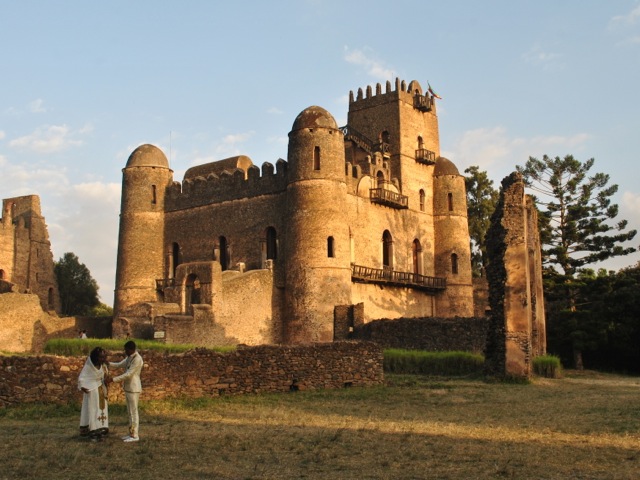
The afternoon flight from Addis Ababa arrived to Gonder at about 4pm and we had just enough time to visit the castle in sunset light. Fasil Ghebbi is a royal compound with six stone castles and some other buildings in a 7ha walled enclosure – now a UNESCO heritage site. The main castle and other buildings were built in the 17th and 18th centuries. The buildings are a fusion of Axumite, western and eastern architectural influences. The entrance ticket includes a guide and the tour of the compound can be done in half an hour. We were about the only tourists at the site but there was an Ethiopian wedding party on a photoshoot in traditional attire. Apparently there is much more action in Gonder around major Ethiopia religious festivals. Graham Hancock in his The Sign and The Seal: The Quest for the Lost Ark of Covenant has some wild stories about Timkat celebration in Gonder.
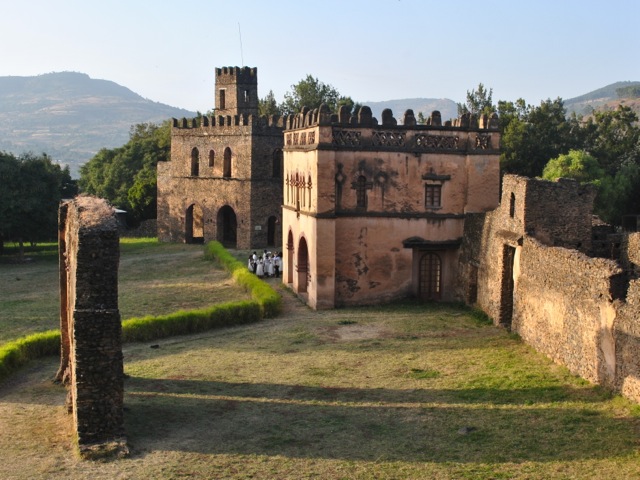
In 1930s Gonder was an Italian administrative center and the main street has some buildings from that period. The night we were in Gonder unfortunately the power was off (yes in the entire city). After visiting the castle we roamed around in search of a restaurant but because of the power outage that was not exactly easy. We eventually managed to get a beer and some shiro in a small local place. A sheep roamed around in the main dining hall enhancing the authenticity of the experience.
Early next morning we headed for Simien mountains on a tour that we arranged from Addis.
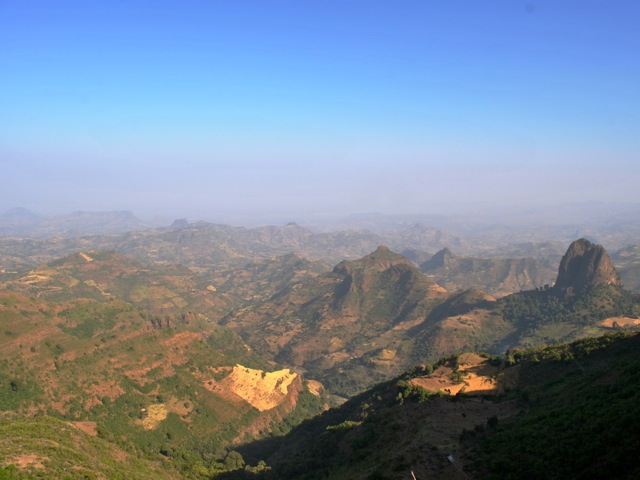
On the way there is a view point on the left side of the road with a spectacular view towards Simien mountains where one can stop and take a picture. The good paved road then proceeds through fields and villages towards the national park. In late November all the farmers were busy harvesting and fields were very pretty golden color. Highlands of Ethiopia is a very densely populated part of the country. We saw people, small villages and cultivated fields everywhere.
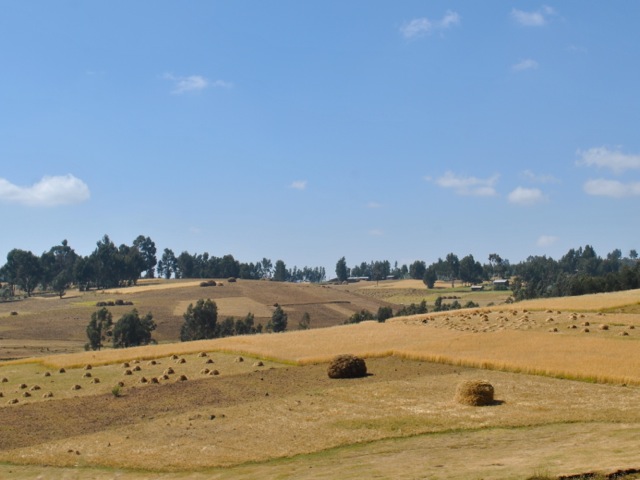

Before getting into the national park we had to collect our guide from the guide association office in Debark. Once we arrived to the park we headed directly to the Simien’s lodge where we stayed. There are currently two lodges in the park – Simien lodge and Limalimo. The feedback seems to be that Limalimo is much nicer but it was full when we tried to book. As elsewhere in Ethiopia prices for the lodge are rather high for what you get. Alternative to staying in a lodge is to camp and there are shorter and longer track options where all the stuff gets carried by mules separately so one would not need to carry all the camping gear. We had a lunch at our lodge and headed for an afternoon hike. In the park in addition to the guide it is required to take a scout. The scout carries a gun though we were not quite sure whether it was for protection from wild animals or from hostile humans. At least in part it seems to be an employment creation scheme for former rebel fighters.
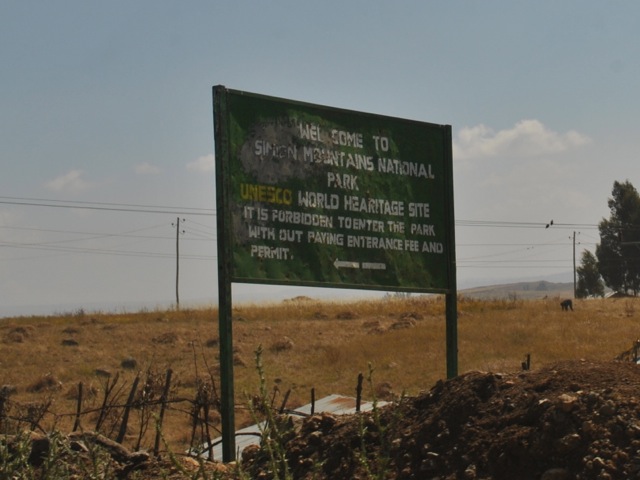
The pictures cannot really capture the beauty of Simien Mountains. The rugged terrain carved over millions of years by water and wind is absolutely breathtaking. Ethiopia’s highest peak Ras Dashen is part of the mountain range towering over beautiful river valleys. The park boundaries seem to mostly cover parts of cliff tops and the cliffs themselves. As a result when you hike through the park and look down to the valleys you see cultivated fields and villages. It is hard to imagine how residents get to those villages because there were no roads to be seen. Certainly locals must be super fit to go up and down the hillsides.

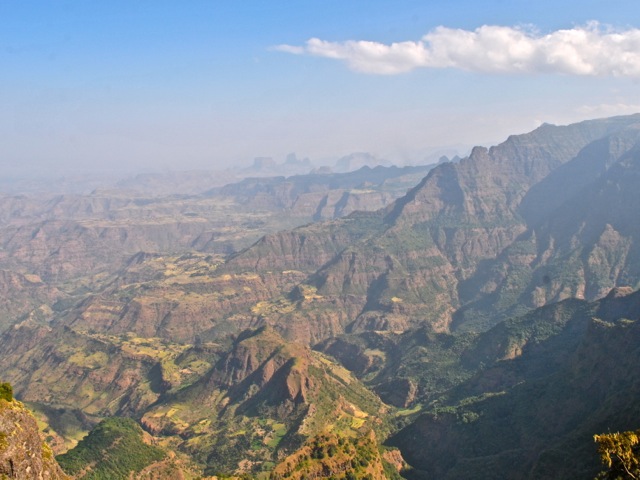

We came across a few locals in what was presumably the area within the boundaries of the national park walking around, chasing cattle and some kids trying to sell souvenirs to tourists.
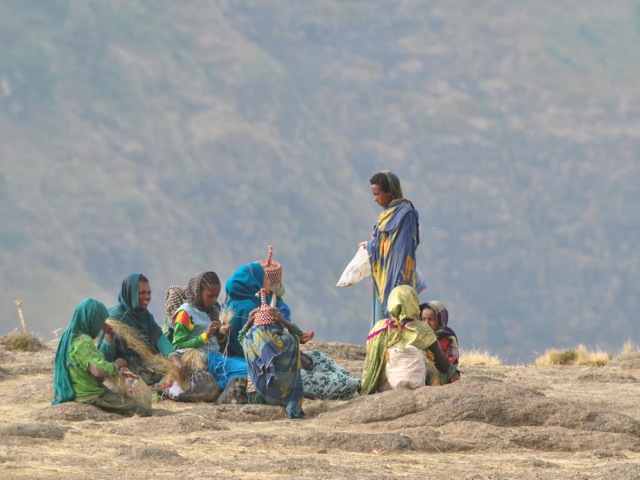
For us the most amazing part of the trip – aside of stunning vistas – was seeing gelada monkeys and hanging out with them. Geladas are endemic to Ethiopia highlands. They sleep in steep cliffs and during the day come up to the plateau to feed on the grass. Geladas are the only remaining specie of the grass eating monkeys that were at some point in the past plentiful across Africa. But as the continent got hotter only geladas survived by moving to higher elevations in Ethiopian highlands. They are amazing creatures with vocal range complexity second only to humans. In Simien mountains where geladas are protected it is possible to get very near to them and hear them “chatting” to each other making all kinds of noises. Once plentiful across Ethiopia highlands they are declining in number due to habitat loss and competition for grazing land. Simiens lodge shows a very interesting documentary about Geladas during the cocktail hour.
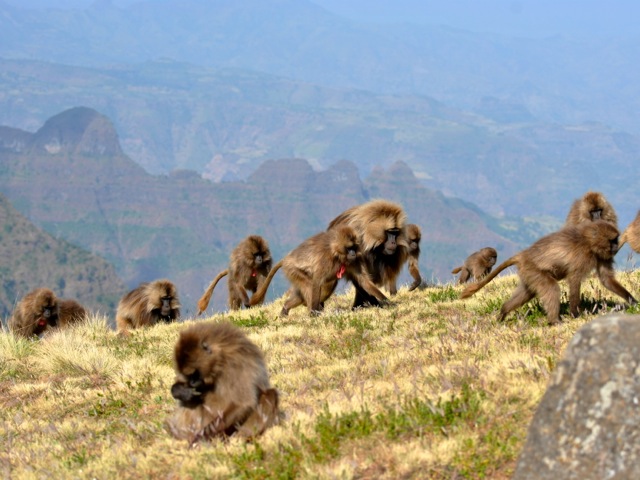
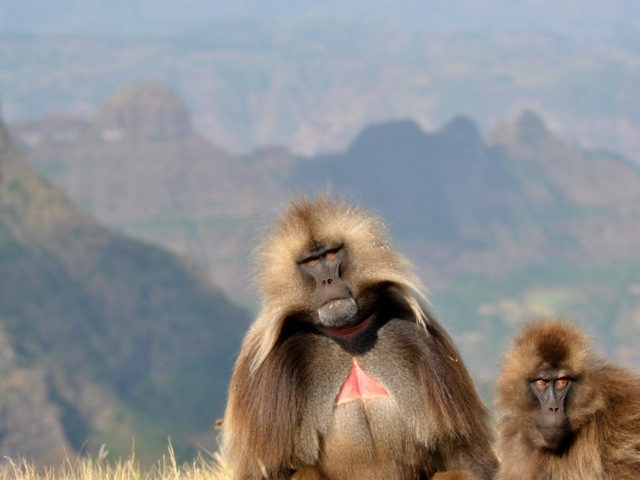
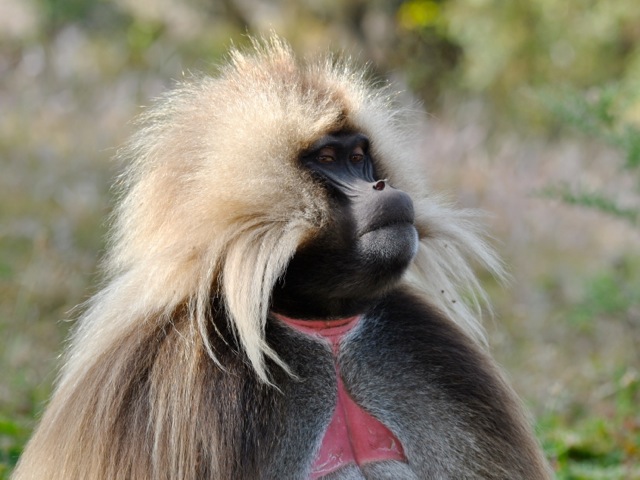
On the second day in the park we went by a car along the road that stretches through the park and is also the rode along which a portion of the hike takes place. Along the way we hopped out for short walks to a waterfall or a stunning view point. The road climbs up with amazing views along the way.
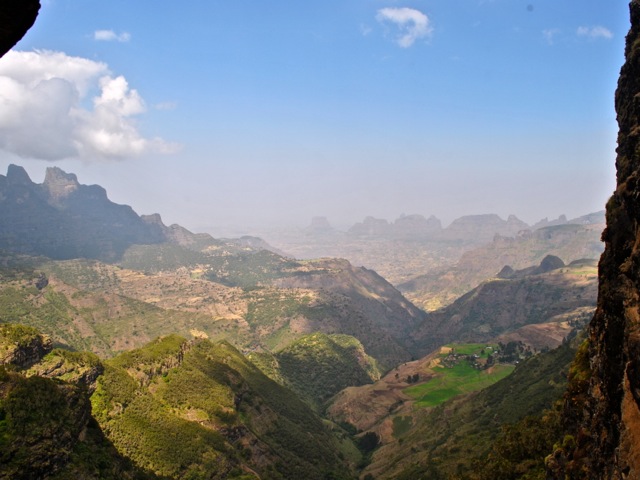
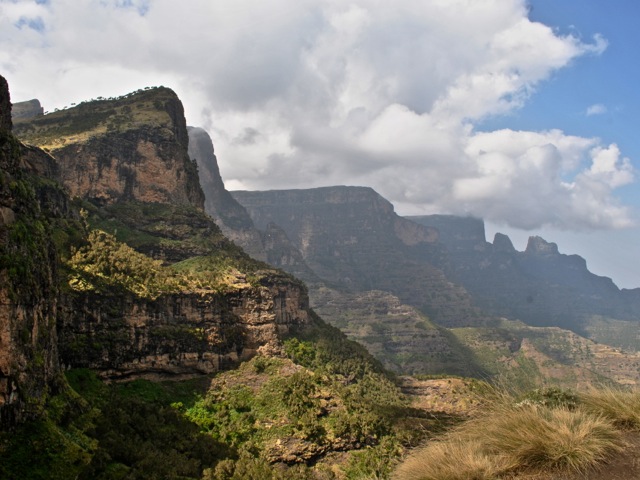
The drive also took us through a stretch of fields with villagers harvesting their crops. We drove along the edges of a canyon with views of villages precariously pitched on steep slopes with surrounding land terraced for growing food.
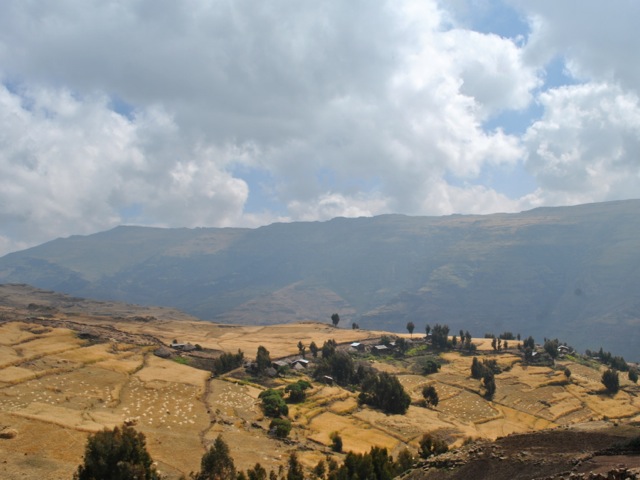
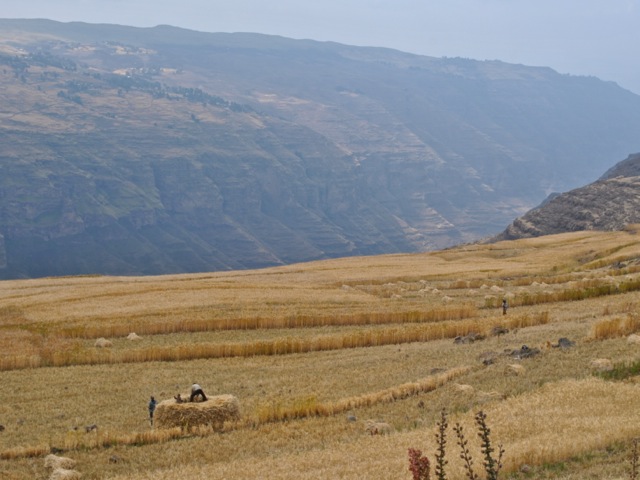

We headed towards Mount Bwahit and took a short hike around its foothills finding gelada monkeys and walia ibexes. Walia ibex is an endangered specie endemic to Ethiopia highlands with only about 1200 of them surviving in Ethiopia in Simien Mountains park.
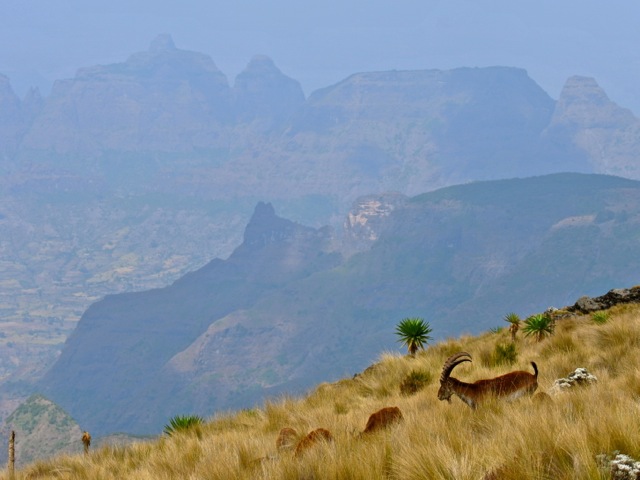
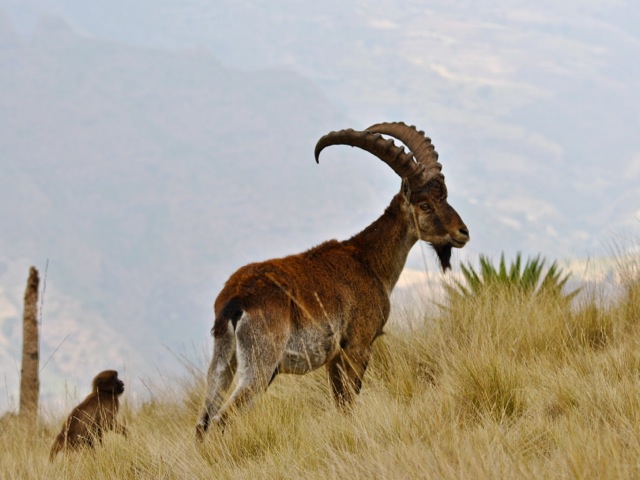
As we were walking around we saw two old male gelada monkeys relaxing. Suddenly they perked up, sat down and started making scary faces. Apparently they heard a commotion in gelada group not too far away. So making scary faces including making eye brows stand out and turn light pink and showing gums and teeth (in the picture below) is a sure way to scare off possible attackers. Whether false alarm or scare tactics worked, but a couple of minutes later these two relaxed again.
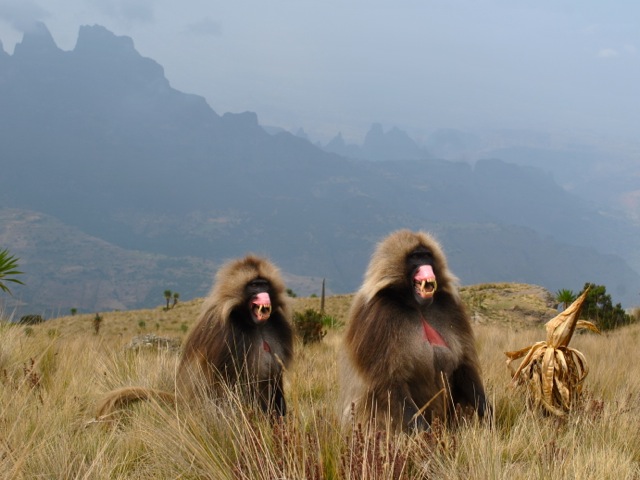
For lunch we headed towards the area of Cheneck camp site with more incredible views to take in. Simien park is excellent to see various birds of pray. Unfortunately they soar really high and it is hard to get a good picture. Lemmergeier was cruising around just as we were having lunch. These are the only birds that eat bone marrow. They through the bones from a hight of up to 1500 meters so they crack against the rocks and eat the marrow. It was as hard to get a good photo of them this time as when we were in Lalibela though.

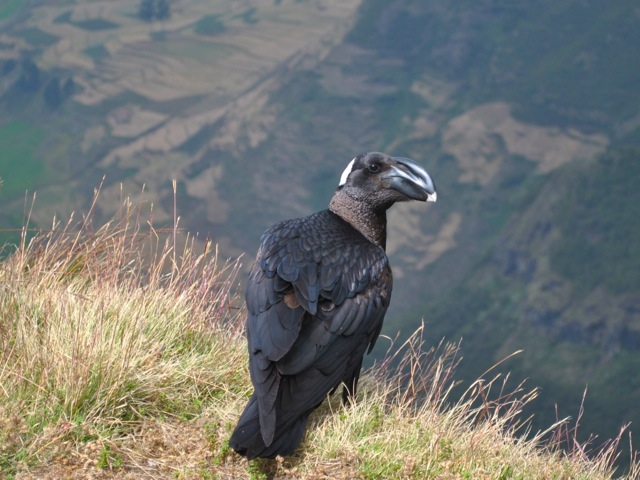
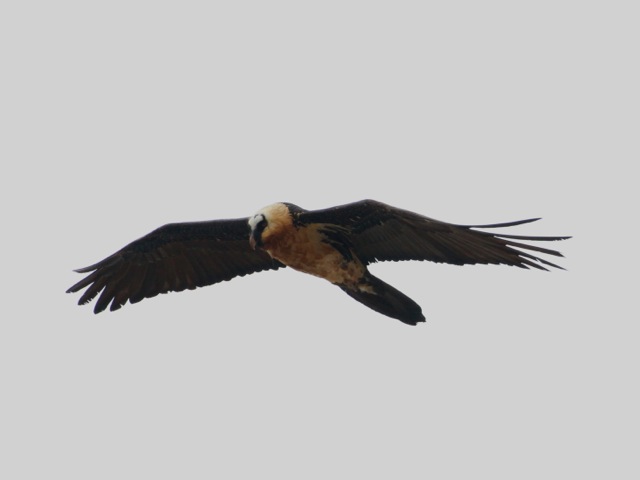
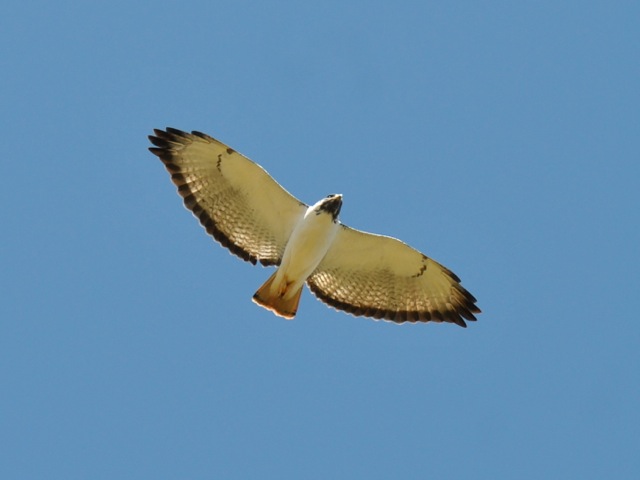

On the drive back we came across a small group of klipspringers grazing on steep hills fringing the road.
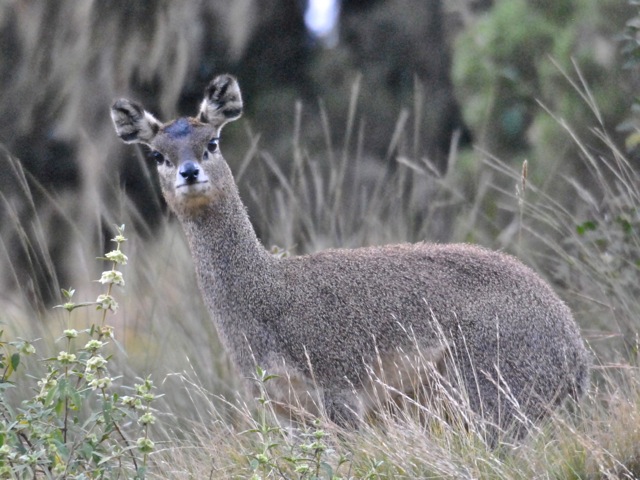
We got back to the lodge for sunset beer with a nice warming fire and another (different) gelada documentary. Because of the 4000m altitude it gets really cold at night in the Simiens. Layers is a good idea as during the day in the sun it is quite warm while at night even walking from the lodge’s main building to the room one wished one had a hat on.
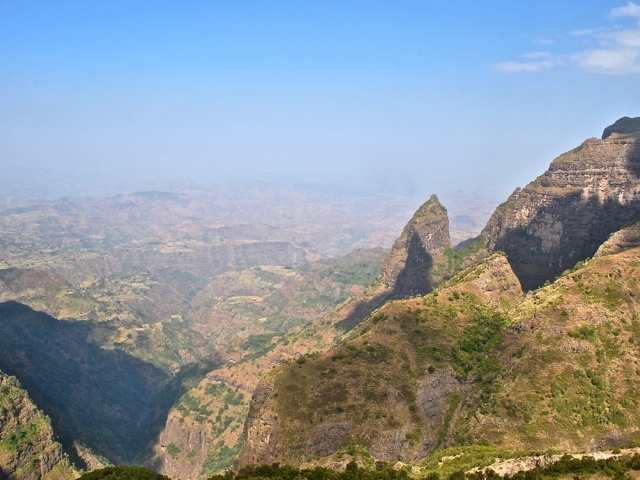
On our last day Sunday we went for another short hike around the lodge taking in more mind-blowing scenery and trying to get pictures of soaring eagles and other birds of pray. After lunch we headed back to Gonder airport to catch later afternoon flight to Addis Ababa. If not time limitations, it would have been great to do a week long track perhaps even taking on Ras Dashen peak – the highest mountain in Ethiopia of 4,550m. Another option is to do Simien as part of the Northern circuit trip also taking in Bahir Dar, Lalibela, Axum or maybe even Geralta and Danakil Depression.
